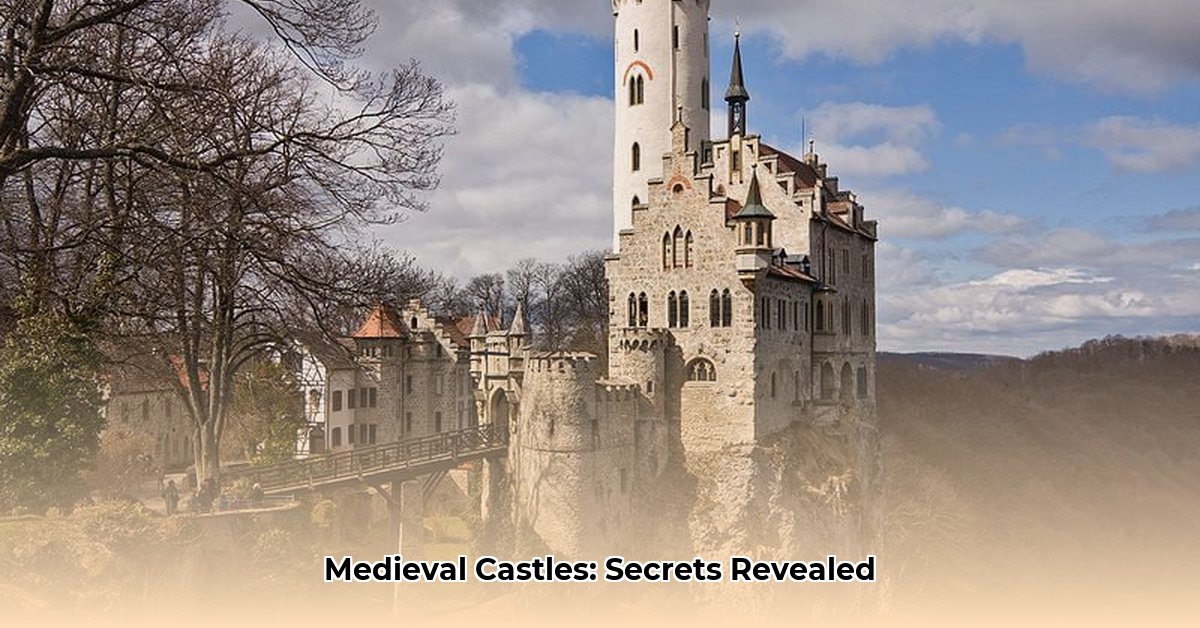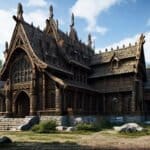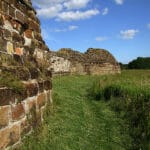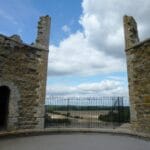From Earthen Mounds to Stone Sentinels: Charting the Evolution of Medieval Castles
Medieval castles, enduring symbols of a bygone era, stand as testaments to architectural ingenuity and the evolving nature of warfare. Their designs, far from static, transformed dramatically over centuries, reflecting advancements in military technology, shifts in societal structures, and the ever-present need for security. This exploration delves into the fascinating progression of castle architecture, from humble beginnings to the eventual decline brought about by the advent of gunpowder.
The First Fortifications: Motte-and-Bailey Castles (10th-12th Centuries)
Picture a towering mound of earth, the motte, crowned by a wooden keep and overlooking a fortified courtyard, the bailey. This simple yet effective design, widely adopted across Europe from the 10th century onward, represents the genesis of castle construction. Built using readily available materials—earth and timber—motte-and-bailey castles were economical and swift to construct, crucial advantages in times of conflict. The elevated position of the motte afforded a commanding view of the surrounding terrain, essential for early detection of approaching enemies. Ditches encircling both motte and bailey added further layers of defense, hindering attackers and serving as obstacles. While offering a substantial defensive advantage over unfortified settlements, these early castles remained vulnerable to fire and determined siege tactics.
The Rise of Stone: Keeps, Shell Keeps, and Concentric Castles (12th-13th Centuries)
As siege warfare became increasingly sophisticated, the inherent limitations of timber became glaringly apparent. Stone, with its inherent strength and fire resistance, supplanted wood as the dominant building material, ushering in a new era of castle design. Massive stone keeps, initially square or rectangular, provided robust strongholds within the castle complex. Recognizing the vulnerability of square keeps to undermining, castle architects introduced the round keep, eliminating weak corners and bolstering defenses. The shell keep, essentially a stone curtain wall encircling a pre-existing structure, offered a cost-effective alternative to constructing entirely new keeps. The pinnacle of medieval military engineering emerged with the concentric castle. These fortresses incorporated multiple layers of curtain walls, each studded with towers and separated by open areas known as killing grounds. This intricate, layered defense presented attackers with a daunting series of obstacles to overcome, making concentric castles some of the most formidable structures of their time. Castles like Beaumaris and Harlech, built by Edward I in Wales, exemplify the effectiveness of this design.
Gatehouses, Barbicans, and Murder Holes: Refining the Art of Defense (13th-14th Centuries)
The gatehouse, the principal entrance to the castle, evolved into a critical defensive point, often the most heavily fortified part of the structure. Thick wooden doors, reinforced with iron bands, barred access. Portcullises, heavy vertically-sliding grates, further restricted entry. Flanking towers provided positions for archers and defenders to rain down arrows, stones, and boiling liquids upon attackers. Murder holes, strategically placed openings in the gatehouse ceiling, allowed defenders to drop projectiles directly onto enemies attempting to breach the entrance. Barbicans, fortified outworks extending beyond the gatehouse, forced attackers to negotiate a narrow, exposed passage, making them vulnerable to flanking fire. These innovations reflect the ongoing arms race between besiegers and defenders, each seeking to gain an advantage.
The Gunpowder Revolution: Adapting to a Changing Battlefield (15th Century Onward)
The advent of gunpowder and cannon, initially crude and cumbersome, gradually reshaped the landscape of warfare and ultimately led to the decline of traditional castle design. Early cannons posed a limited threat, their inaccuracy and slow reload speed negated by existing castle defenses. However, as artillery technology improved, becoming more powerful and accurate, high walls became less of an asset and more of a liability, offering large targets for cannon fire. Castles began to adapt, incorporating thicker walls, sloped surfaces to deflect projectiles, and gunports for their own artillery. However, these modifications proved to be a stopgap. The escalating cost of artillery and fortifications favored larger, centralized states, rendering smaller castles increasingly obsolete. The age of the castle, though drawing to a close, left an indelible mark on military architecture, paving the way for the development of star forts and other fortifications better suited to withstand the destructive power of gunpowder.
A Legacy in Stone: The Enduring Influence of Castles
Medieval castles, far from fading into obscurity, continue to captivate our imaginations. They serve as popular tourist destinations, providing glimpses into the past and inspiring awe with their grandeur. Their designs, both functional and aesthetically striking, have influenced architecture, literature, film, and video games. The study and preservation of these remarkable structures offer invaluable insights into medieval society, the art of warfare, and the ingenuity of those who built and defended them.
- Discover Fermentation Revolution: The Health Benefits of Kimchi: Sustainable Farming Practices - July 30, 2025
- Discover Living Crystals: The Giant Gypsum Formations in Naica’s Cave: A Geological Marvel - July 30, 2025
- Master Molecular Gastronomy: The Science That Turns Your Kitchen into a Lab: Beginner-Friendly Recipes - July 30, 2025
















